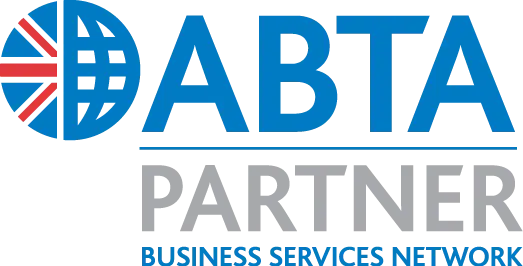
Driving in Ireland.
Honest, simple and no hidden fees.
- Free Cancellation
- Excess Protection
- 24/7 Support
- Fair Fuel Policy
Perfect for touring.
Driving in Ireland is mostly relaxed and straightforward. The road system has undergone a large-scale road improvement, which has made driving there quicker and easier. Road distances are indicated in kilometres on green signposts, although you still see some older signs which still show miles. Most signs are in English, although you may see the Gaelic give way sign, Géill Slí, and many place names are also in Gaelic.
Main highways have passing lanes, separated from the main carriageway by a broken yellow line. You are expected to use this lane to let faster vehicles pass; care should be taken when using this lane as it can be potholed. Rural roads can be in a poor state of repair, and the added hazard of livestock wandering on to these roads calls for extra care to be taken when traveling in rural areas.
Why not read our Ireland travel guide? You may also like to view information about destinations in Ireland.
Tips for driving in Ireland
Which side of the road do they drive on?
Drive on the left, overtake on the right. Traffic coming from the right has priority.
Seat belts
If fitted, seat belts must be worn at all times by all occupants of the vehicle.
Driving with children
Children under 3 must be placed in an appropriate child restraint. They may only travel in the front seat if the child restraint system is rear facing and the airbag is deactivated.
Children who are over 3, shorter than 150cm, and weigh less than 36kg must use an appropriate child restraint when travelling in cars fitted with seat belts. If the car isn’t equipped with seat belts they must travel on the rear seats. Child restraints must conform to the ECE R44.03 standard.
Blood alcohol limit
The blood alcohol limit is 50mg of alcohol per 100ml blood. This falls to 20mg of alcohol per 100ml of blood for inexperienced motorists and professionals such as hauliers and taxi drivers.
Can I use a mobile?
It’s illegal to use a mobile unless you have a hands-free kit.
Reflective vests, triangles & other essentials
It is recommended you carry a warning triangle, first-aid kit, fire extinguisher, and spare bulb kit in the car. If you wear glasses, you should carry a spare pair in the car.
Parking
Parking is controlled by single and double yellow lines. Cars parked illegally may be towed away, so always check the parking restrictions before parking and leaving your vehicle.
On the spot fines
The Irish police or Garda can issue a fixed penalty notice. This may be handed directly to you directly or attached to your windscreen. The fine must be paid within 28 days. If the fine is not paid within 28 days, it increases by 50%.
Illegally parked cars can be clamped and sometimes towed.
Horns and headlights
Dipped headlights should be used during periods of poor daytime visibility.
You must not use a horn in a built-up area between 23.30hrs and 07.00hrs unless there is a traffic emergency.
What should I do if I breakdown?
If you breakdown, you should place a reflective triangle 30m behind the vehicle to warn other drivers (if carrying one). Call the supplier who will be able to advise you further. It is recommended you contact ourselves at the same time to ensure you follow the correct procedure.
What should I do if I have an accident?
If you’re in an accident, you MUST notify the Police and get an accident report for insurance purposes. Failure to do so may result in you footing the whole bill. It is recommended that you contact the supplier and ourselves at the same time to ensure you follow the correct procedure.
Toll roads
There are a number of toll roads in Ireland. Tolls generally cost between €1.90 and €5.10 and are payable at the tolling booth. The M50 currently operates a barrier free system which records your number plate and does not require payment at a booth.
Current toll roads in Ireland
M50: Barrier-Free Toll
M1: Gormanston – Monasterboice
M3: Clonee – Kells
M4: Kilcock – Enfield – Kinnegad
M7/M8: Portlaoise – Castletown/Portlaoise – Cullahill
N6: Galway – Ballinasloe
N8: Rathcormac – Fermoy Bypass
N25: Waterford City Bypass
Limerick Tunnel
East-Link Bridge
Dublin Port Tunnel
Driving distances
Dublin to Limerick – 202km (2hrs 15mins)
Dublin to Cork – 259km (2hrs 45mins)
Cork to Limerick – 100km (hr 35mins)
Limerick to Galway – 100km (1hr 25mins)
Limerick to Waterford – 126km (2hrs 5mins)
Galway to Cork – 198km (2hrs 45mins)
Sligo to Dublin – 207km (2hrs 40mins)
Waterford to Dublin – 170km (1hr 55mins)
Waterford to Cork – 132km (1hr 50mins)
Book nowPlaces to hire in Ireland
- Cork
- Cork Airport (ORK)
- Cork Rail Station
- Dublin
- Dublin Airport (DUB)
- Galway
- Kerry Airport (KIR)
- Kilkenny
- Killarney
- Knock Airport (NOC)
- Limerick
- Naas
- Navan
- Shannon Airport (SNN)
- Sligo
- Waterford
- Wexford
Average customer rating for car hire in Ireland
(4.72 out of 5.00) based on 493 responses to our customer survey.
Speed limits
- Motorways - 120 kph / 75mph
- Open roads - 60/100 kph / 37/62mph
- Built up areas - 50 kph / 31mph
Phone numbers
- Police - 999/112
- Fire - 999/112
- Ambulance - 999/112
Fuel
Most filling stations accept credit cards across Ireland.





